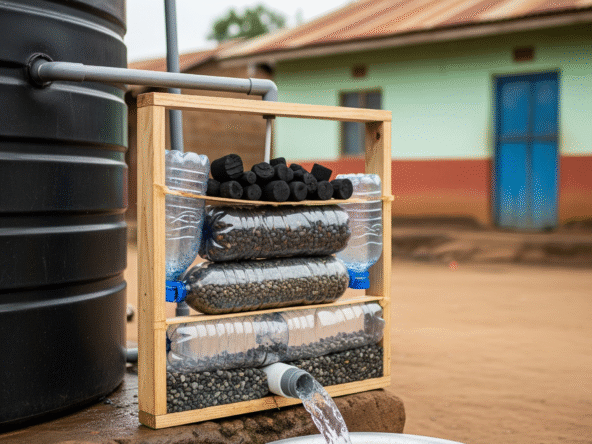If you are farming in Isinya, Tharaka, Makueni, or other semi-arid parts of Kenya, selecting the correct irrigation pump is essential for effective water delivery and crop health. An appropriately sized pump ensures your farm receives the right flow and pressure while minimizing energy or fuel costs.
This guide explains how to calculate the right pump size, choose the ideal pump type, and match your setup with tanks, solar power, or backup systems.
1. Why Proper Pump Sizing Matters
Using the wrong pump size leads to either:
- Excess energy usage and system strain (if oversized)
- Inadequate water flow and poor irrigation (if undersized)
A properly sized pump improves efficiency, extends pump life, and ensures crops receive enough water. If your system also uses elevated tanks, see this guide on:
Gravity-Fed Tank Setups in Kenya
2. Key Factors to Consider When Sizing a Pump
| Factor | Role in Pump Selection |
|---|---|
| Flow Rate (L/min) | Determines how much water is delivered per minute |
| Total Dynamic Head (TDH) | Includes height from water source and pipe friction |
| Water Source | Affects pump type (borehole, river, or tank) |
| Irrigation Method | Drip, sprinkler, or flood |
| Power Supply | Solar, petrol/diesel, or grid |
If your farm is located off-grid, see:
Off-Grid Water Planning for Farms in Kenya
3. Pump Types Commonly Used in Kenyan Farms
| Pump Type | Suitable For | Power Source | Price Range (KSh) |
|---|---|---|---|
| Surface Pump | Water from tanks or rivers | Solar/Electric | 10,000–35,000 |
| Centrifugal Pump | Flood irrigation or shallow intakes | Petrol/Diesel | 8,000–25,000 |
| Submersible Pump | Boreholes or deep well extraction | Solar/Electric | 18,000–60,000+ |
| Solar Pump Kits | Complete systems for off-grid farming | Solar | 25,000–80,000+ |
For temporary storage and water delivery, consider:
IBC Tank Use in Kenyan Homes
4. Calculating the Flow Rate for Your Crops
Use this formula:
Flow Rate (L/min) = (Water needed per plant × Number of plants) ÷ Irrigation time in minutes
Example:
- 2,000 plants
- Each needs 2 litres per day
- You irrigate over 2 hours (120 minutes)
Calculation: (2 × 2,000) ÷ 120 = 33.3 L/min
This flow rate should match your pump’s output. Also, ensure your tanks can handle the volume. A 5,000 litre tank is a reliable buffer.
5. Best Tank Sizes to Pair With Irrigation Pumps
Tanks store water and prevent pumps from cycling too frequently. Here’s a quick guide:
| Farm Size | Recommended Tank Size |
|---|---|
| Small (<0.5 acre) | 2,000–3,000 litres |
| Medium (0.5–2 ac) | 5,000–10,000 litres |
| Large (2+ acres) | 10,000–20,000 litres |
Explore tank brands here:
Top Water Tank Brands in Kenya
For additional water sources:
Rainwater Harvesting in Kenya
6. Backup Systems and Automation
To improve reliability:
- Keep a petrol backup pump for emergencies:
Backup Pumping Options - Automate with float switches to stop the pump when the tank is full:
Tank Refill Automation
Final Pump Selection Tips
- Choose pumps with available spare parts in Kenya (e.g. Garney, Honda, Solartech)
- Add non-return valves to prevent backflow
- When using solar, match the panel, controller, and pump capacity
For technical help:
Troubleshooting Solar Water Pumps


